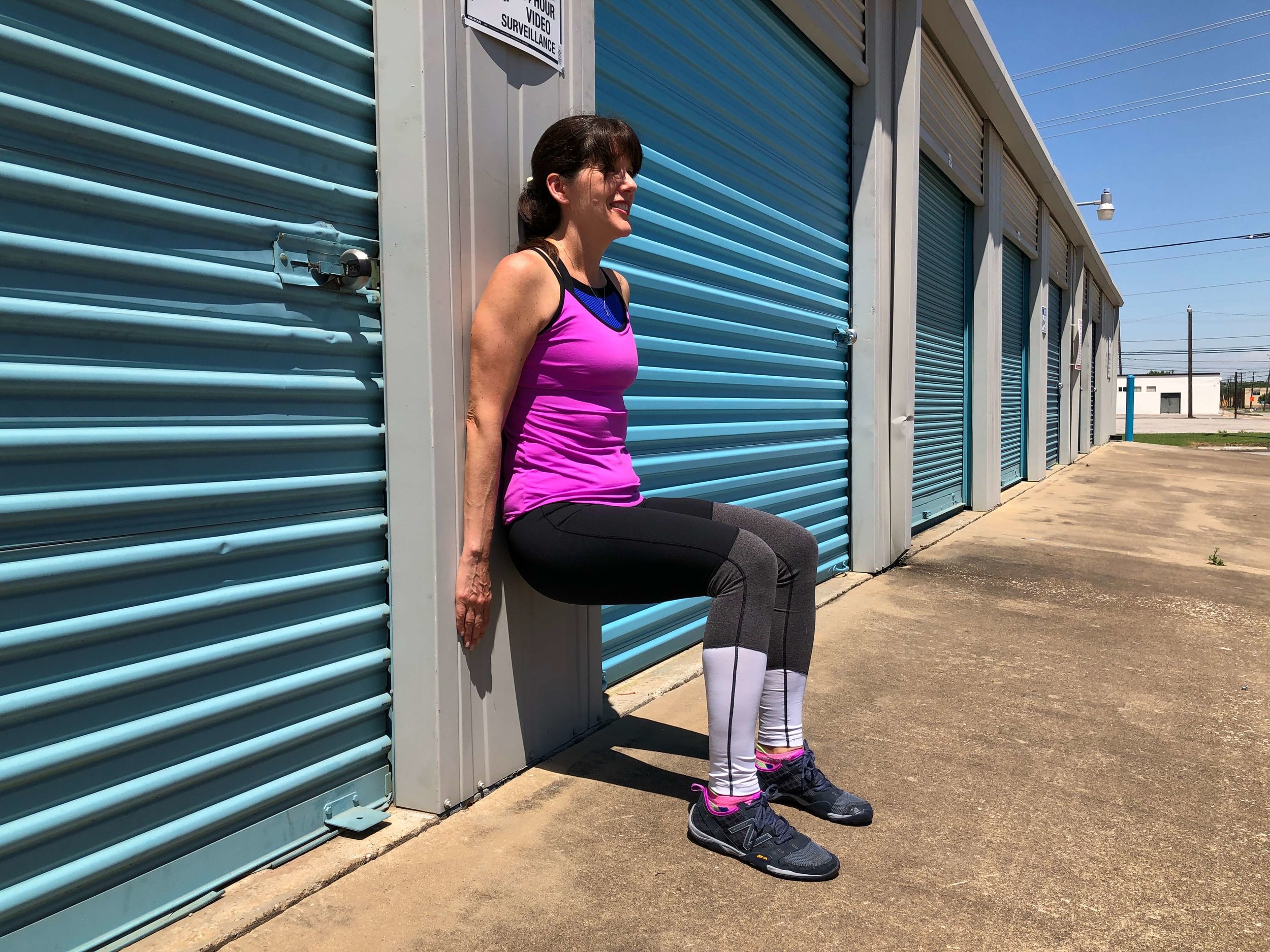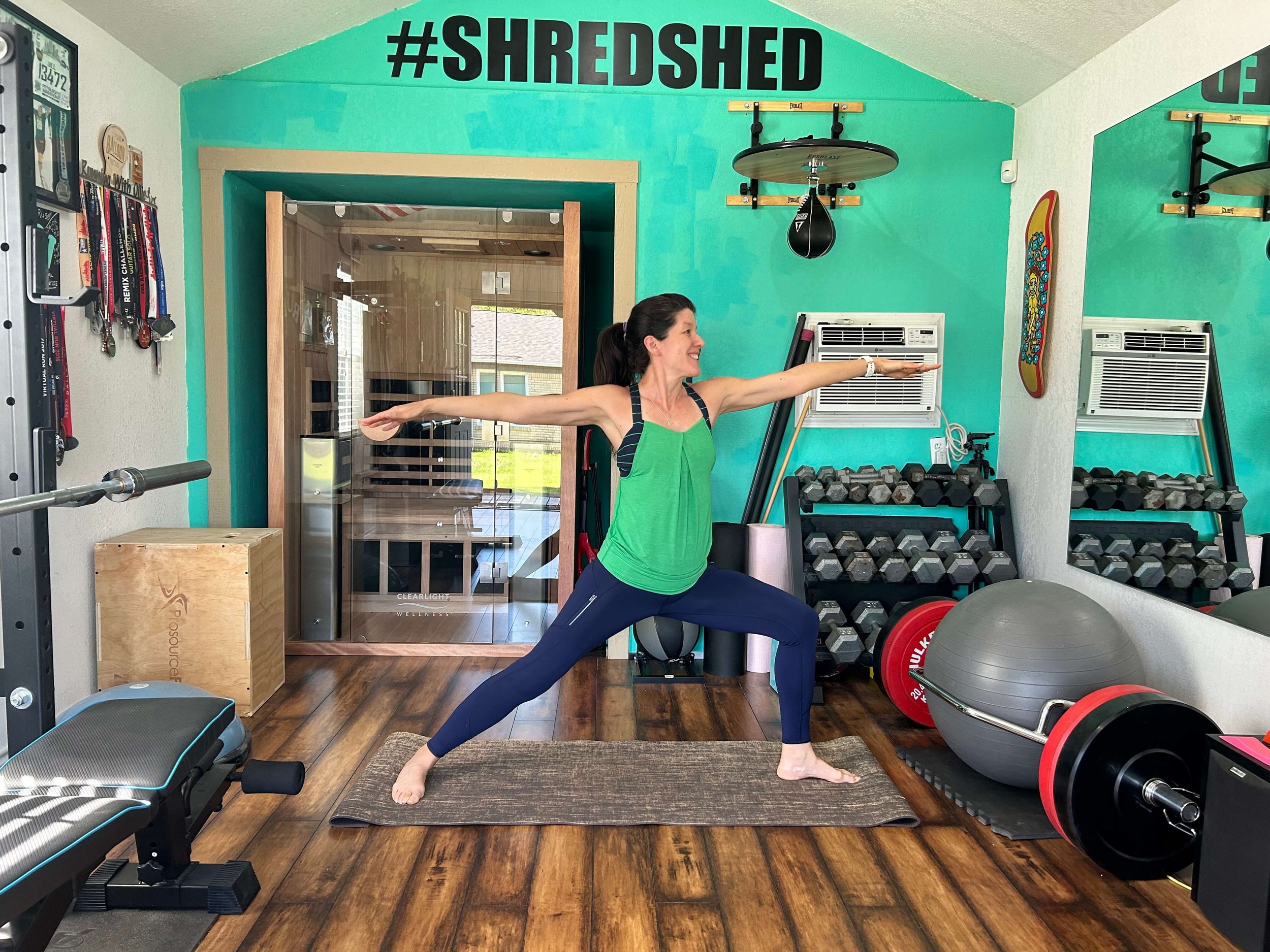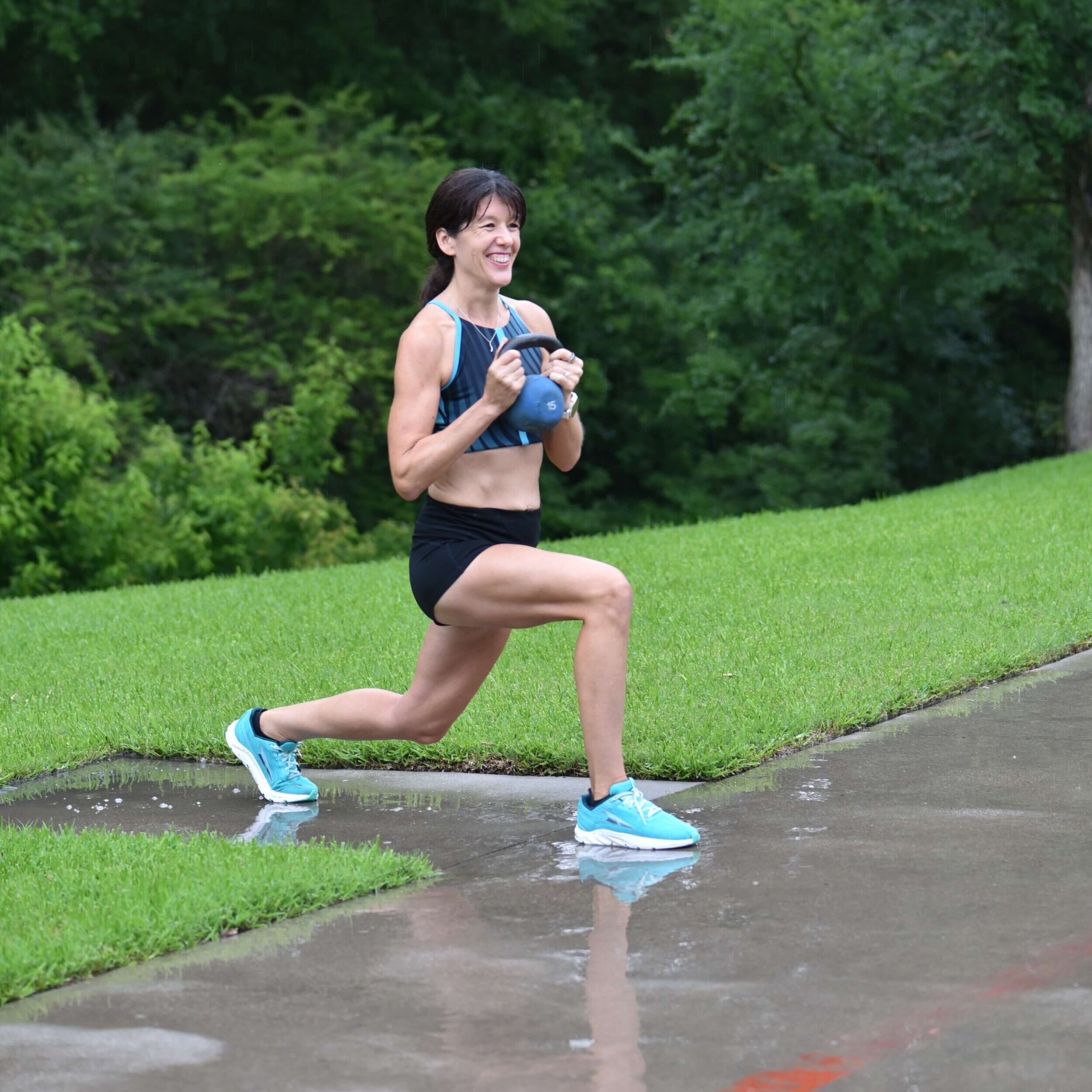Welcome to the latest edition of “workout Wednesday” when each week I share a new running workout or strength exercises for runners.
This week’s theme on the blog is non-scale victories. Monday’s post was called Screw the Scale, because so many people are needlessly frustrated by that number, when there are better, more accurate ways, to measure results. Friday’s post is all about how to take accurate body measurements, stay tuned.
A lower number on the scale is not always a positive result, and a higher number on the scale is not always a negative result, even though it may seem that way. There are non-scale tracking methods that you can use to note improvements in your health and fitness.
One of the ways to track progress is to test your performance. Even if the scale isn’t budging, if you can run faster, or longer without tiring, if you can lift heavier weights, or perform an exercise more efficiently, these are all positive results that deserve celebrating.
Fitness tests are one way to record how you are progressing over time. Here are some ideas for fitness tests that you can perform at home to track advancements in your fitness. They don’t require a lot of equipment or space.
FIT TESTS TO TRACK PERFORMANCE IMPROVEMENTS
Repeat the fitness tests every three to four weeks. Build some of the test exercises into your workout plan to practice between tests. The test is the workout, and the workout is the test.
If you notice positive changes in your performance upon retesting, you know that you’re making strides towards improved fitness, and that is a non-scale victory to celebrate.
Your first test is your baseline. Take note of your performance and try to improve upon it the next time you test.
RESTING HEART RATE
Resting heart rate is an excellent way to measure improvements in cardiovascular fitness. If you don’t wear a fitness watch or have a heart-rate monitor that tracks your resting heart rate, you can take your pulse with two fingers on the inside of your wrist before you get out of bed in the morning.
Once you feel the pulse on your wrist, count pulses for 60 seconds to get your heart-rate, perform the test three days in a row, first thing in the morning before getting out of bed, under the same calm conditions. Average the readings over three days to get your resting heart rate.
According to National Academy of Sports Medicine, a typical heart rate is between 70 and 80 beats per minute; while the average for a male is 70 beats and for a female is 75 beats. Generally speaking, as your cardiovascular fitness improves, your resting heart rate will decrease.
BALANCE TEST
Stand by balancing on one foot and close your eyes. Time how long you can stand without falling over. (It’s harder than it seems). Record your time and repeat on the other leg.
PUSH UP TEST
Set a timer for one minute (or 30 seconds for a beginner) and perform as many pushups as you can complete in that time frame. Only count full reps with your chest touching the floor with perfect form, half reps don’t count. Even though this is a timed test, do not rush the reps or sacrifice form. If your form deviates, the test is over.
If you are not able to do push-ups yet, start with an elevated push-up (hands on a bench with your feet on the floor) or push-up from your knees until you get strong enough to do full reps. Record the number of perfect reps performed in the designated time frame.
WALL SIT TEST
wall sit test in Fort Worth
A wall sit tests your lower body muscle endurance. Place your back flat against a wall and lower your body until your knees are at a 90-degree angle and your thighs are parallel to the ground. Keep your arms straight down at your sides, do not lean forward or place your hands on your thighs. Set a timer and hold for as long as you can. Record your time.
ELBOW PLANK TEST
An elbow plank tests your core stability and muscle endurance. Position your elbows on the floor with your shoulders directly over your elbows. Hold your body in a straight line from your ankles to your shoulders, with your neck neutral.
Be sure your hips do not hike or sag (these compensations makes the exercise easier—your body’s way of cheating the exercise). Set a timer and track how long you can hold a plank position with perfect form. Once your form deviates, the test is over.
STRAIGHT-ARM PLANK W/SHOULDER TAP
Start in a straight arm plank position with your wrists directly under your shoulders. Keep your body in a straight line from your shoulders to your ankles. Do not allow your hips to hike or sag. While keeping your pelvis square to the ground, lift your right arm off the ground and tap your left shoulder. Now lift your left arm and touch your right shoulder. Do not allow your body to rotate; imagine you have a glass of water balancing on your tailbone; don’t let it spill.
Set the timer for one minute (or 30 seconds for beginners) and count the number of shoulder taps you can perform without rotating your body (if you turn your body, the rep doesn’t count).
JUMP ROPE TEST
Set the timer for one minute (30 seconds for beginners). Jump rope with your feet together (no single leg skipping) on a soft surface, like grass or rubber. If you miss a jump it doesn’t count, start over where you left off after a misstep. Record the number of complete jumps in the designated time frame.
ONE MILE RUN TEST
You can track improvements to your aerobic capacity with a one-mile run. It’s best to run outdoors on a flat surface, the same route each time you test.
You can use GPS on a smartwatch or phone app to measure the one-mile mark, or drive the route in your car to verify the distance, or take your test to a local track (four times around the track on the inside lane is one mile on a 400-meter track).
Run at a pace that feels challenging, but that you can hold for one mile. Don’t sprint at full speed as you won’t be able to keep that effort for a mile.
Take note of how many minutes it takes you to complete the mile.
HEART RATE RECOVERY TEST
Take your heart rate fully rested immediately before your one-mile run test.
Retake your heart rate immediately upon completion of the mile.
Retake your heart rate two minutes after completing the mile.
As your fitness improves, you will notice lower heart rates at faster or similar speeds and faster recovery of your heart rate after two minutes.
Fitness testing can be a motivating tool because you likely wouldn’t notice these improvements without performing the tests. It can be a monthly reminder that your hard work is paying off.
Take the fitness tests and let me know how it goes. I’d love to hear from you.
Did you like this post? Do you know someone who might benefit? It helps me when you share with your friends and followers on Facebook, Twitter or Pinterest.
Questions? I’d love to help.













When we “fall back” at the end of Daylight Saving Time, most people think about gaining an extra hour of sleep. Years ago, I wrote about using that hour to restart morning workouts. Now, I see this moment even more clearly. The time change is more than a bonus hour. It creates a natural opening to reset habits, experiment with morning movement, and rethink the stories we tell ourselves like “I’m not a morning person.” Whether you use the extra hour to move your body or catch up on sleep, this season is a chance to rebuild your morning routine in a way that fits your life.